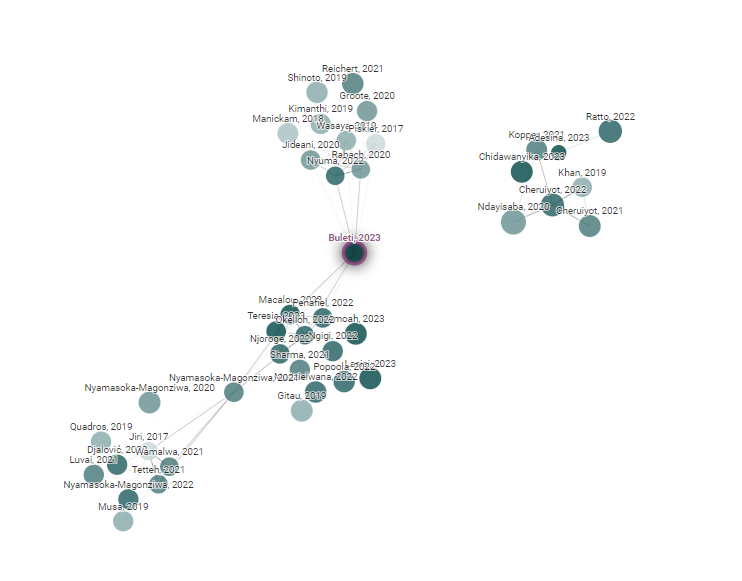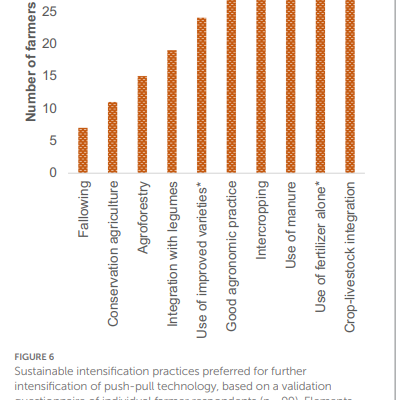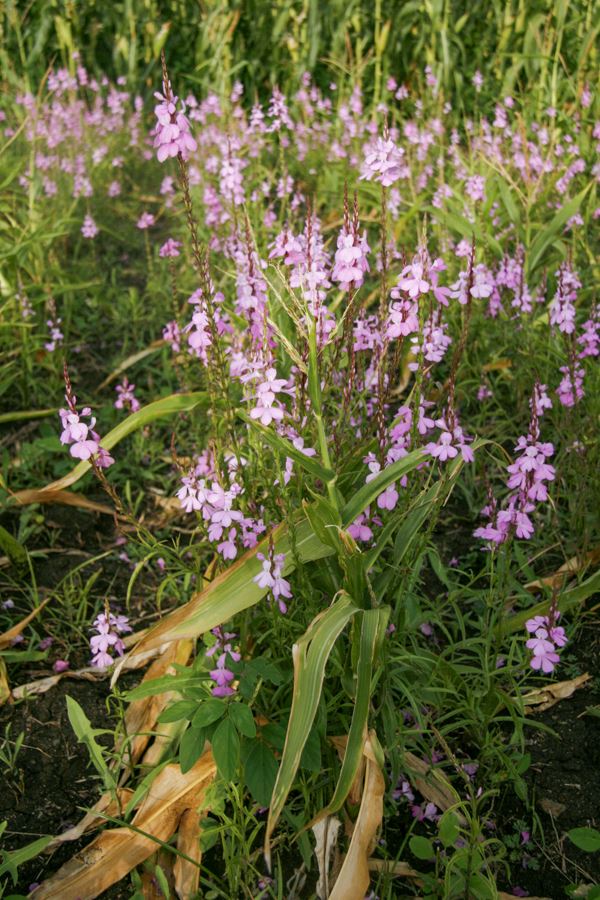Push-pull technology provides farmers in East Africa with an eco-friendly strategy that increases crop yield and household income in smallholder cereal systems by controlling pests and improving soil health. Though promising for a sustainably intensified production, push-pull has been used at a limited scale, primarily in maize and sorghum-based production systems. Expanding the scope, applicability and acceptance of the practice in smallholder farming systems, will leverage the full potential of push-pull as a widely applicable sustainable farming practice. Using key informant interviews and focus group discussions, we explored farmers’ needs and perceived pathways for integrating push-pull and other sustainable intensification practices in synergy with existing cropping systems in Kisumu, Vihiga and Siaya Counties in Western Kenya. We found that farmers in the region typically grow and intercrop a variety of crops, with maize being the most common crop. Farmers commonly practice crop-livestock farming, intercropping, crop rotation, manure and fertilizer use, and use improved varieties to increase maize production. Across the counties, integration of food legumes, agroforestry and crop-livestock farming, were identified as fundamental pathways for stretching the benefits of push-pull. Limitations to farmers’ aspirations and key enablers for facilitating the spontaneous adoption of identified sustainable intensification practices for push-pull farming systems are discussed.
Sylvia Imbuhila Buleti, Shem Kuyah, Adewole Olagoke, Moses Gichua, Samuel Were, Frank Chidawanyika and Emily A. Martin
Connected Papers: https://www.connectedpapers.com/main/b8bfad3124fa45ba365f7d4202bf61abf65638e4/Farmers%E2%80%99-perceived-pathways-for-further-intensification-of-push%20pull-systems-in-Western-Kenya/graph
Available downloads:
Farmers’ perceived pathways for further intensification of push-pull systems in Western Kenya



